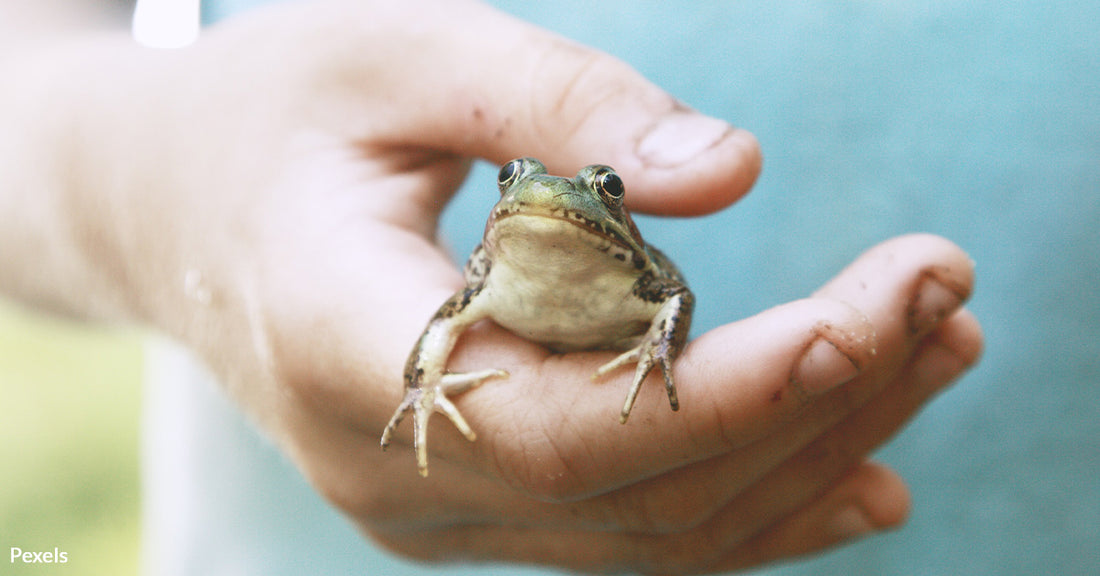Native Amphibians, Underserved By The Endangered Species Act, Face Serious Threats
Matthew Russell
Amphibians are some of the most enigmatic creatures in the animal kingdom. With their unique ability to inhabit both aquatic and terrestrial environments, they play a crucial role in maintaining ecological balance. However, these incredible creatures face unprecedented challenges, including habitat loss, pollution, and the ever-looming threat of roadkill.
The Endangered Species Act (ESA) plays a critical role in safeguarding native amphibians in the United States, shedding light on their plight and the conservation efforts aimed at preserving these remarkable animals.
 Photo: Pexels
Photo: PexelsHabitat loss is a major threat to native amphibians.
Amphibians at Risk: A Call for Help
Amphibians, comprising frogs, toads, and salamanders, are currently facing a global crisis, with many species teetering on the brink of extinction, according to the U.S. Fish and Wildlife Service. While these creatures are highly threatened, the funding and resources allocated to their conservation have been sorely lacking, leading to concerns among herpetologists about the ability to address this crisis effectively.
Unveiling the Funding Disparity
To understand the extent of the issue, a study compared the average funding allocated per species listed under the ESA for different vertebrate classes in the United States. The study found that listed US amphibians receive only a fraction of the funding received by other vertebrate classes, receiving a mere one-quarter of the resources, a fact backed up in economic literature, as well. This stark inequality in funding exacerbates the challenges amphibians face in their battle for survival.
 Photo: Pexels
Photo: PexelsClimate change disrupts amphibian habitats and life cycles.
Listing Bias: A Missed Opportunity
In addition to funding disparities, there is a concerning listing bias in the application of the ESA. Astonishingly, 82% of amphibian species deemed at risk by NatureServe evaluations remain unlisted under the ESA, a study published in BioScience reports. This discrepancy highlights a missed opportunity to provide legal protection to these vulnerable species.
Roadkill: A Silent Threat to Amphibians
While habitat loss and pollution pose significant threats to amphibians, one often underestimated peril they face is roadkill. As The Atlantic reports, every year, countless amphibians become casualties on roads, further endangering their populations. While common animals like squirrels and raccoons are frequently roadkill victims, endangered species are also falling victim to this preventable threat.
Amphibians are particularly susceptible to roadkill due to their unique behaviors and physiology, reports a study published in BMC Ecology. Cold-blooded creatures, they are drawn to warm surfaces like asphalt, which leads them to cross roads. Unlike some animals that instinctively avoid roads, certain amphibians are nonresponders, showing little regard for oncoming traffic.
 Photo: Pexels
Photo: PexelsWetland destruction eliminates critical amphibian breeding grounds.
Amphibians' Vulnerable Migration
According to a study in Biological Conservation, amphibians' unique life cycle, which involves transitioning between aquatic and terrestrial habitats, makes them especially vulnerable during their migrations.
Spring nights, when rain replenishes forest pools and calls them to mate, witness frenzied amphibian movements, MetroWest Daily News During these migrations, countless amphibians venture onto roads, often with fatal consequences.
The Critical Importance of the ESA
As amphibians grapple with a myriad of threats, the Endangered Species Act emerges as a vital lifeline for their conservation. This crucial legislation has the potential to provide legal protection and essential resources to combat the looming crisis that amphibians face. However, concerted efforts are needed to rectify funding disparities, address listing bias, and raise awareness about the critical role of the ESA in safeguarding these remarkable creatures.
 Photo: Pexels
Photo: PexelsDomestic and feral cats are some of the most threatening predators that native amphibians face.
Taking Action: The ESA Pledge
To ensure the survival of our native amphibians, it's imperative that we advocate for their protection under the ESA. We invite you to take a stand for the conservation of amphibians and pledge your support for the following actions:
1. Advocate for Funding: Lobby for increased funding for amphibian conservation under the ESA to rectify the existing disparities.
2. Raise Awareness: Educate others about the plight of amphibians and the importance of listing those at risk under the ESA.
3. Support Conservation Initiatives: Contribute to and volunteer with organizations dedicated to amphibian conservation efforts.
4. Demand Inclusion: Petition for the inclusion of currently unlisted amphibian species deemed at risk by organizations like NatureServe.
5. Promote Road Safety: Advocate for and participate in initiatives to reduce roadkill and protect migrating amphibians.
6. Engage in Habitat Restoration: Participate in or support projects that focus on restoring and preserving critical amphibian habitats.
7. Educate the Public: Spread awareness about the impact of roadkill on amphibians and encourage responsible driving near wetland areas.
8. Support ESA Amendments: Advocate for amendments to the ESA that enhance protection for amphibians.
9. Donate to Conservation Projects: Initiatives like Project Peril, a program of Greater Good Charities, help protect endangered species on the brink of extinction.
10. Vote for Change: Support political candidates who prioritize environmental conservation and the protection of endangered species.
 Photo: Pexels
Photo: PexelsRoadkill poses a significant and often underestimated threat.
By taking these actions, we can work collectively to ensure that amphibians receive the protection and support they desperately need. Together, we can safeguard these incredible creatures, preserving their place in the intricate tapestry of our planet's ecosystems and securing a brighter future for generations to come.
The time to act is now. Sign our petition and be a part of the movement to protect and conserve our native amphibians.

